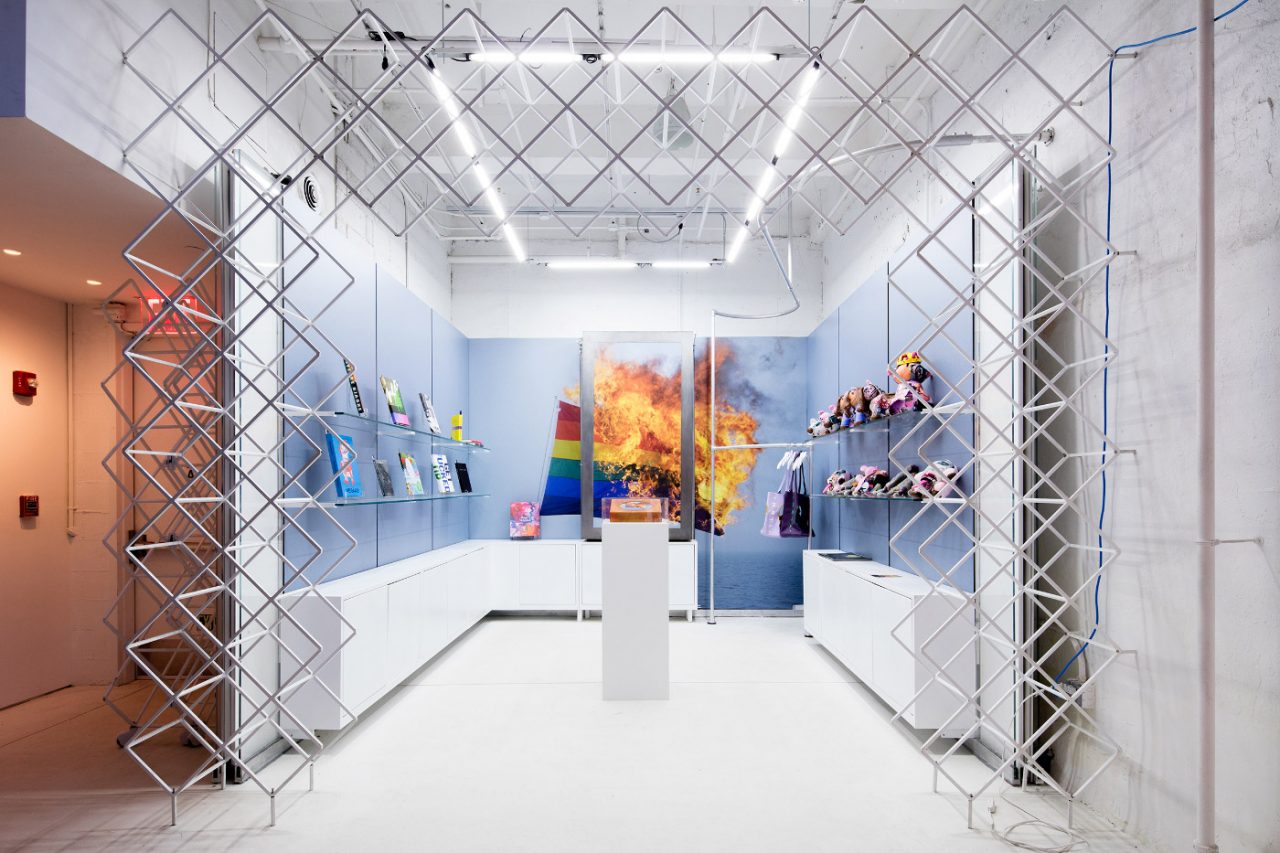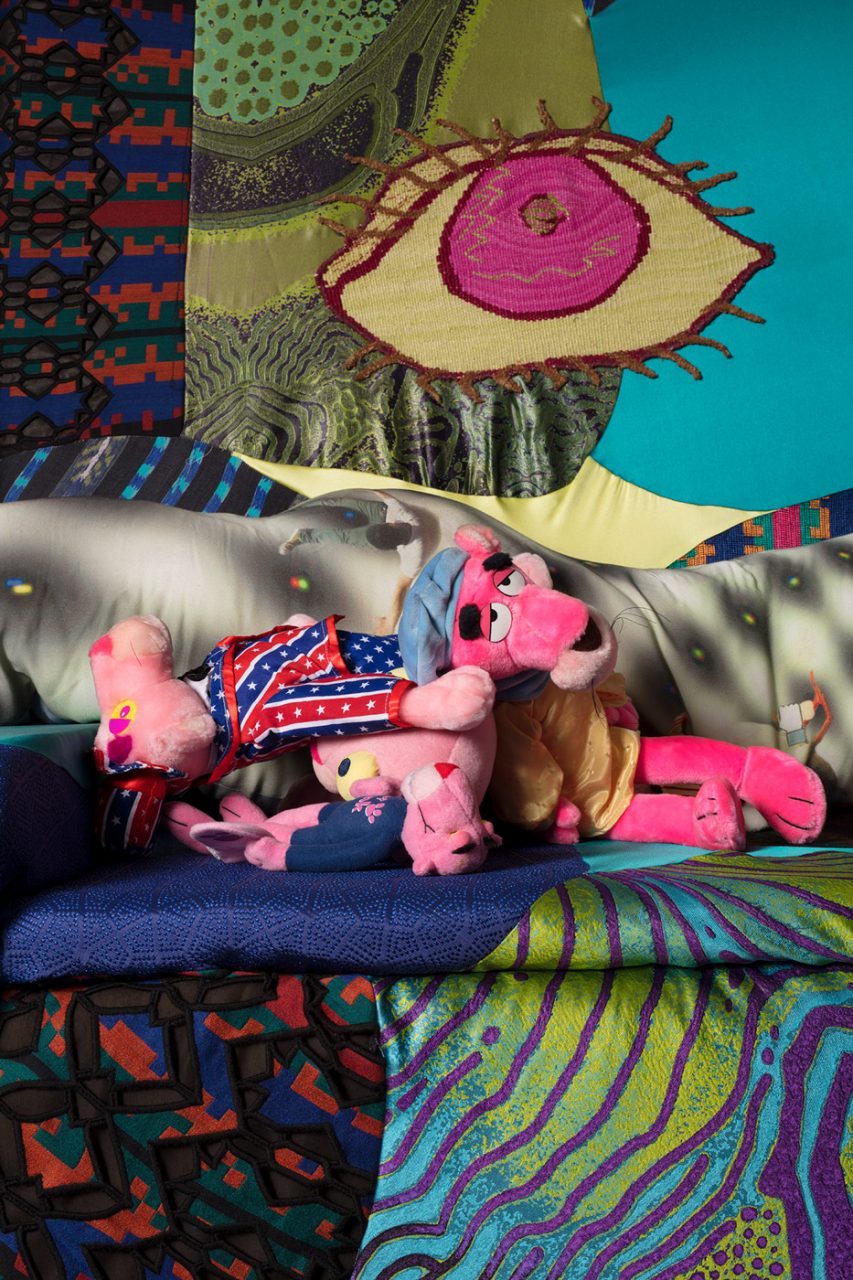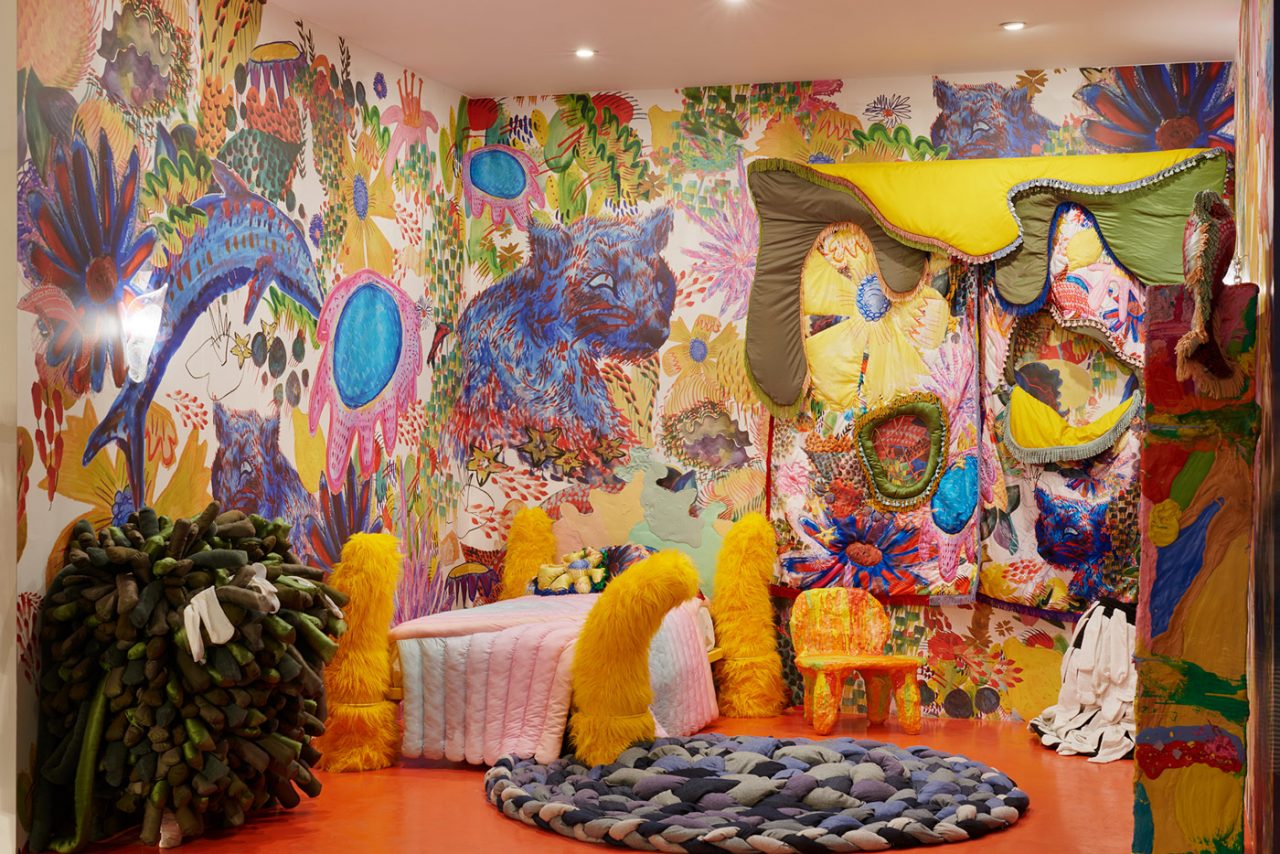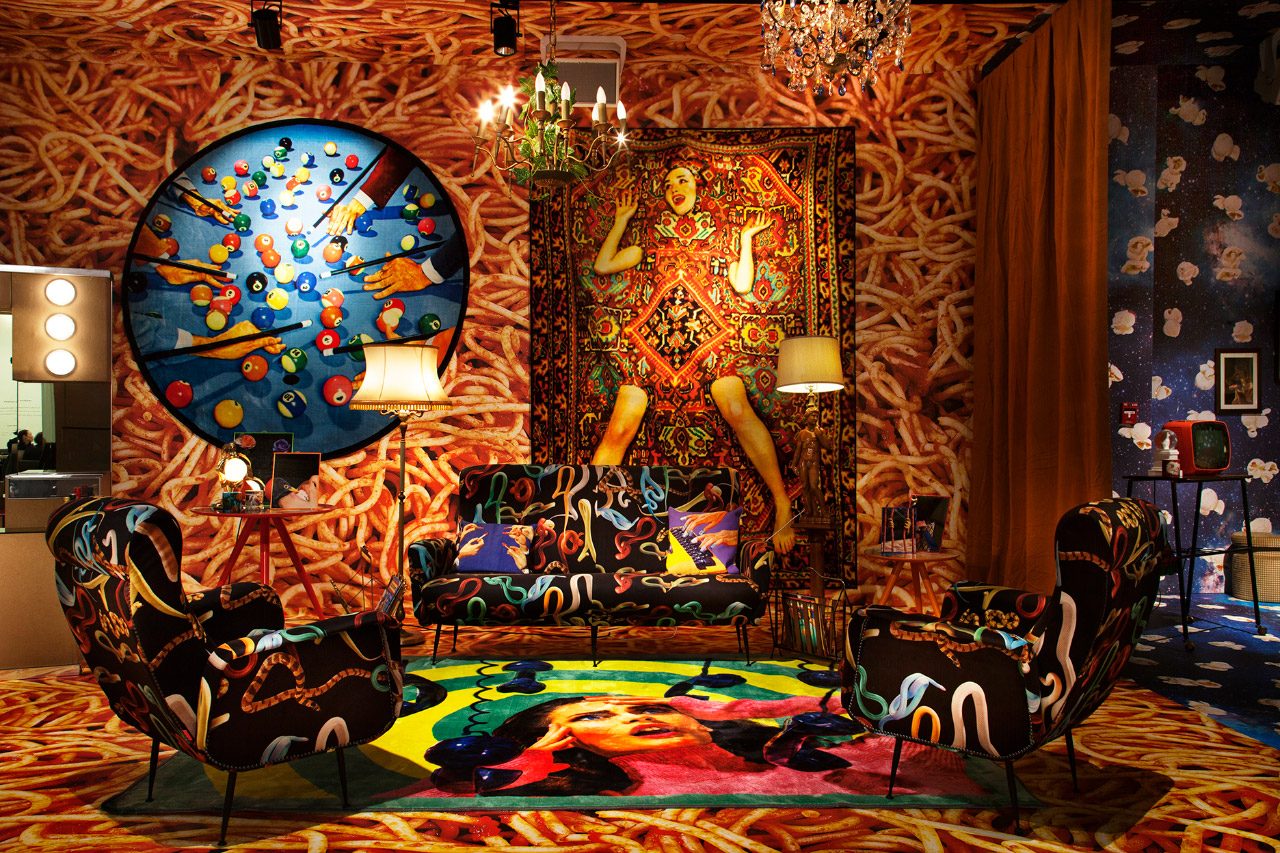Maurizio Cattelan and Pierpaolo Ferrari’s maximalist vision of domestic bliss involves saturating every corner with color, texture, and pattern. Their traveling installation of housewares by Seletti, in collaboration with their magazine TOILETPAPER (mounted in December 2016 by Fondation Beyeler in Art Basel Miami Beach as Maze of Questions, and in New York’s Cadillac House in the spring of 2017 as TOILETPAPER Paradise by Visionaire), covers a bedroom, bathroom, and kitchen with images that are both seductive and absurd—blood-red nail polish on disembodied women’s fingers, cloudlike kernels of popcorn floating through space, and large-scale spaghetti noodles—on ostensibly every available surface, embracing both an Italian postmodernist and a 1950s American-housewife nostalgia.



The installation coincided with Norwegian artist Bjarne Melgaard’s dystopic department store installation, The Casual Pleasure of Disappointment, a February “happening” in collaboration with Red Bull, the lifestyle brand formerly known for its energy drinks. Melgaard created a derelict department store and stuffed it not only with clothes designed in reference to a few of his favorite things (Bash Back!, a pro-queer activist group, for example, or Chris Kraus’s landmark novel I Love Dick) but also with selections from his own wardrobe, piled like heaps of garbage for the public to take, Hunger Games-style.
Meanwhile, in Washington, D.C., Yayoi Kusama’s Hirshhorn Museum retrospective featured an array of her iconic Infinity Mirror Rooms, in addition to The Obliteration Room, a seminal 2002 work in which viewers are given dot stickers of various colors and sizes to cover the interior of an all-white home—refrigerator, tables, chairs, sofa, and all. Over the course of the exhibition, the interior becomes an increasingly vibrant, pulsing collage.
These four distinct artists share a common aspiration for the absolutely maximal, which, contrary to the abstract, discrete gestures of minimalism, creates an extremely personal alternative physical landscape. Art bleeds into the design sphere, taking into account the space in which it is shown: in all of these cases, the familiar environments of the domestic or commercial space.

Both museums and non-art brands alike have caught on to the allure of maximalism, its immersiveness and, perhaps more importantly, its interactivity; more than ever, viewers are invited to do the unthinkable and lay their hands on the art. Social media is also certainly complicit in this maximalist resurgence, thanks to Instagram and the prevalence of the #artselfie. Apart from its widespread free publicity and appeal to sheer vanity, the #artselfie offers a kind of tactility in the digital age. Visitors physically insert themselves into the composition of a work and take its visual properties home with them to keep. Particularly in an era in which two-dimensional work is readily available on screens, it’s the maximal that encourages the public to make a physical, often emotional, connection to a work of art.
The other function social media serves for the rise of maximalism is its inherent ability to widen one’s worldview. For younger artist and designers who grew up as so-called digital natives, the internet offers both infinite surface area for their mood boards and instant access to the visual history of the world, regardless of era or location. “For them, history is a treasure trove,” 2017 Chicago Architecture Biennial cocurator Mark Lee said in an Artforum interview. “They don’t feel shame or guilt to retrieve from it.”



Two young designers experiencing a meteoric rise (and who happen to share a studio) are Misha Kahn and Katie Stout, whose respective practices—both rough-hewn, eccentric, and often displayed within textured, oozing, psychedelic environments—mix kitsch and pop culture with astute art-historical references. When naming his sources of inspiration, Kahn often takes out his phone as a visual aid, naming Eskimo carvings, Gwen Stefani, and Pee-wee’s Playhouse among them. And for Stout, Dolly Parton, Raymour & Flanigan, and Charlotte Perriand are equally influential on her body of work. The world of maximalism embraces imperfection and provocation, banishing isolation and passivity on both the part of the work and the viewer. The source material is both art history and personal history, untidily accumulated and repackaged—once more, with feeling.
